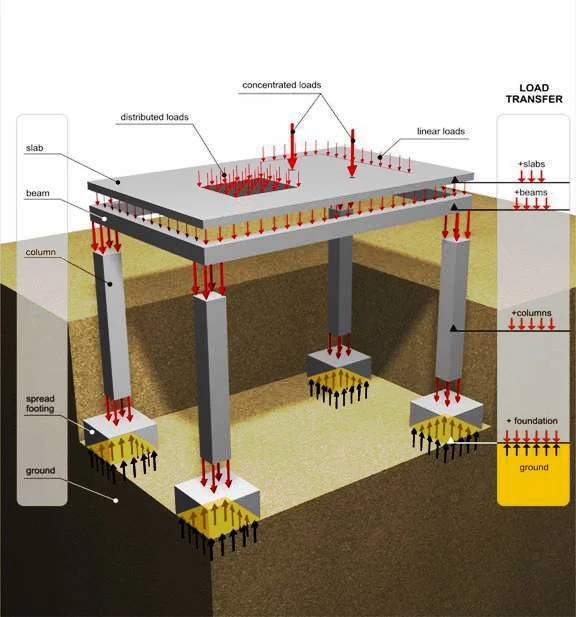Load types on building:
Loads that are implemented on a structural element can differ between numerous categories and figures. Loads can be of various types. It can be dead loads, containing both the self weight and covering material. It can be live loads similar to the human being load on a slab, wind loads which are owing to the air pressure that the building is exposed to and seismic load that are because of an earthquake.
Load Transfer forms:In structural engineering load shifting by means of structural elements from one element to another element in numerous forms, it can be flexural force because of moment, axial force like in columns, shear forces like on shear walls and core walls.
Load Transfer through Structural elements:
1) Load transferred to slab
The slab will hold up different types of load like the dead loads from covering material and wall partitions and also will support the live load which is the source largely from human beings on this slab.
2) Load transferred from slab to beams:
The forces transfer from slab to beams generally takes place either in one way or in two ways. The total system completely counts on the geometrical dimensions of the slab in which if the ratio Long side / short side < 2 it is considered as 2 way slab, and if Longer side to shorter side greater than 2 then it is considered as 1 way slab.

3) Load transferred from beam to columns
As beams are supported on columns it will transmit the load that it holds it already from supporting the slab to the column itself. This load transferred will be mainly axial force and in eccentric column it will transmit moment also to the column. Note: in some cases like flat slab the slab is supported directly on columns without beams.

4) Load transferred from columns to foundation:
As the columns are sustained by foundation; the load relocated from the all components to attain the columns it will be transferred from the column through the column necks adjacent to the footing in the form of axial force and in unconventional cases or lateral loads applied it will transfer moment and shear also to the footing.

5) Load transferred from Footing to soil:
Soil is the root support of the footing. All the forces that come in contact with the footings will be shifted to the soil, which will endure this force by the aspect recognized as bearing capacity which fluctuates from one type of soil to another in which bearing capacity, is the key factor in calculating the footings size.

